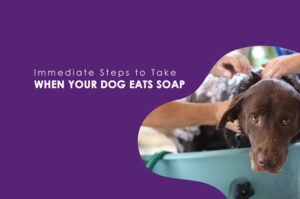As a responsible pet owner, ensuring the safety and well-being of your four-legged companion is paramount. Just as we “child-proof” our homes for the safety of our little ones, it’s equally essential to “pet-proof” our living spaces to create an environment that fosters the health, happiness, and security of our beloved pets.
In this article, we will provide you with some valuable tips and tricks to help you create a safe and secure space for your beloved pet.
8 Tips for Pet-Proofing Your Home
1. Secure Your Living Space
Start by securing your living space. This includes making sure all windows and doors are securely closed and locked, especially if you live in an apartment or have a balcony. Install window screens to prevent your pet from accidentally falling out or getting stuck. Keep toxic plants out of reach, as some can be harmful if ingested. Make sure all electrical cords are safely tucked away or covered to prevent chewing.

2. Create a Designated Pet Area
Designate a specific area in your home for your pet. This can be a room or a corner of a room that is their own personal space. Fill it with their bed, toys, and a litter box or pee pad for easy access. This not only provides your pet with a sense of security and comfort but also helps contain any messes or accidents.

3. Store Cleaning Products Safely
Store all cleaning products, chemicals, and medications in cabinets or high shelves that are inaccessible to your pet. Keep in mind that some common household items, such as certain cleaning agents and human medications, can be toxic to animals. It’s always better to be safe than sorry, so make sure these items are securely stored away.
4. Hide Wires and Cords
Pets, especially puppies and kittens, love to chew on things. To prevent any accidents or damage to your electrical cords, hide them or use cord protectors. You can also use bitter apple spray or other pet-safe deterrents to discourage them from chewing on cords. This will not only protect your pet but also prevent any potential electrical hazards.
5. Secure Trash Cans
Make sure your trash cans have secure lids or are stored in a cabinet that your pet cannot access. Dogs and cats are naturally curious and may rummage through the trash, potentially ingesting something harmful. By securing your trash cans, you can avoid any unnecessary trips to the vet.
6. Check for Small Objects
Regularly check your home for small objects that your pet could swallow. This includes coins, buttons, jewelry, or any other small items that can pose a choking hazard. Keep these items out of reach or store them in containers with secure lids.
7. Install Safety Gates
If you want to restrict your pet’s access to certain areas of your home, consider installing safety gates. These gates are easy to install and can be used to block off staircases, rooms with delicate items, or areas where your pet may be at risk. It allows your pet to roam freely in designated areas while keeping them away from potential dangers.

8. Keep Food and Medications Secure
Store all food and medications in pet-proof containers or cabinets. Many human foods are toxic to pets, including chocolate, grapes, onions, and certain artificial sweeteners. Make sure your pet cannot access these items to prevent any accidental ingestion. Keep medications securely stored away, as some can be harmful or even fatal to animals.
Conclusion
Pet-proofing your home is an essential part of being a responsible pet owner. By taking a few simple steps, you can create a safe and secure environment for your furry friend. Remember to secure your living space, create a designated pet area, store cleaning products safely, hide wires and cords, secure trash cans, check for small objects, install safety gates, and keep food and medications secure. With these tips in mind, you can provide your pet with a happy and healthy home.
We hope you found these tips helpful. If you have any other suggestions or experiences to share, feel free to leave a comment below! Happy pet-proofing!
FAQS(Frequently Asked Questions)
1. What does “pet-proofing” mean, and why is it important for my pets?
Pet-proofing involves making your home safe and secure for your pets by identifying and addressing potential hazards. It’s important to prevent accidents, injuries, and exposure to harmful substances, ensuring your pets live in a secure environment that promotes their well-being.
2. How can I identify potential hazards in my home for my pets?
Start by assessing your living space from your pet’s perspective. Look for items that could be chewed, swallowed, or pose a choking hazard. Identify household plants that may be toxic, secure loose electrical cords, and remove small objects that could be ingested.
3. Are certain household products harmful to my pets?
Yes, many common household products can be toxic to pets. Items such as certain plants, foods, cleaning agents, and medications can pose a threat.
4. How can I secure hazardous areas in my home from my pets?
Use security gates to block off rooms or areas that may be unsafe for your pets.
5. How does pet-proofing contribute to my pet’s behavioral well-being?
Making your home safe and cozy helps your pets feel happy and calm. When you remove things that could be dangerous and make the place comfortable, your pets are more likely to behave well and be less stressed. This makes their home a better and healthier place for them.




